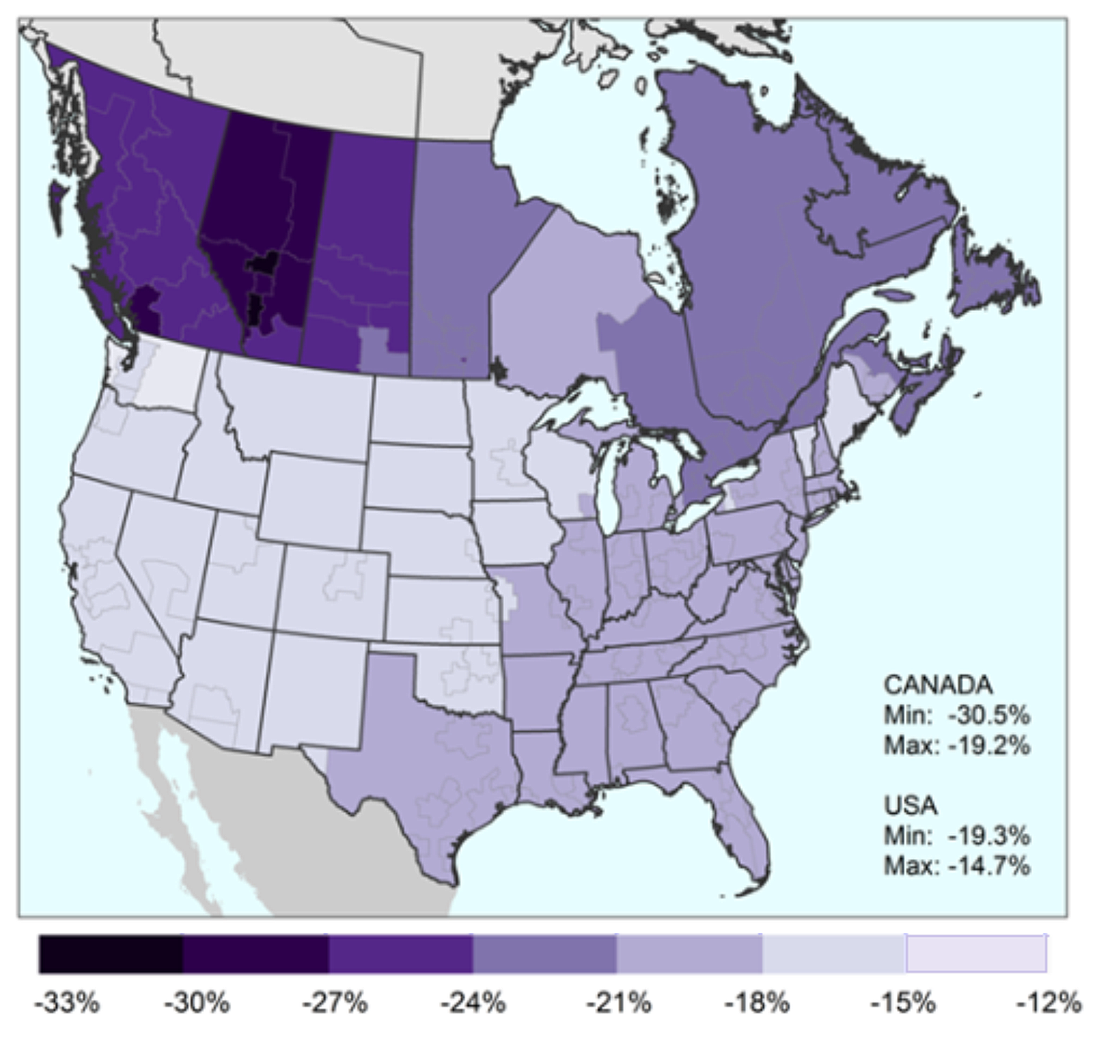Study: The effect of changing Canada–United States border costs on North American trade patterns and expenditures
Archived Content
Information identified as archived is provided for reference, research or recordkeeping purposes. It is not subject to the Government of Canada Web Standards and has not been altered or updated since it was archived. Please "contact us" to request a format other than those available.
Released: 2019-06-12
In spite of agreements to reduce their impact, non-tariff barriers to Canada–US trade remain substantial. A new Statistics Canada study finds that these administrative burdens and differences in product standards and regulations, among other factors, impose the equivalent of a 30% tariff on the flow of goods across the border. By contrast, provincial borders are estimated to impose the equivalent of a 10% tariff. The recent signing of the Canada-United States-Mexico Agreement makes understanding how trade flows respond to changes in border costs all the more important.
The new study, "The Effect of Changing Canada–United States Border Costs on North American Trade Patterns and Expenditures," quantifies the impact of the border. Using data on trade in non-energy goods across 201 Canadian and US regions, it examines how patterns of North American trade and expenditures would change as border costs rise or fall. The analysis finds that rising border costs would increase domestic trade as firms turn away from international markets. Increased border costs would also result in higher prices for consumers and decreasing expenditures on goods. Regions along the Canada–US border would be the most affected.
The study finds that Canada–US trade declines significantly as firms seek domestic markets. The regional distribution of changes in Canada–US trade are shown in the map. If there were no bi-lateral free trade agreement and the two countries were to trade under the auspices of the World Trade Organization, exports of Canadian non-energy goods to the United States would fall by almost 25%, with Western Canada seeing the strongest relative decline. In response, domestic trade would rise by about 10%.
Increasing border costs would raise prices for both Canadian and US consumers, who would lose consumption opportunities overall. According to the study, the value of total goods expenditures would decline by 1.8% (about CDN$10 billion) in Canada and 0.2% (approximately CDN$7 billion) in the United States.
The study also suggests that if Canada–US border costs were to fall to a level corresponding to those imposed at provincial borders, exports to the United States would rise by 82% and imports by 72%. Intra- and interprovincial trade would fall by about half as firms orient themselves towards the US market. Meanwhile, total non-energy goods expenditures would rise in both Canada (+11.4%) and the United States (+0.8%).
These national gains would not be evenly shared across regions, with regions along the border typically gaining the most. In Canada, expenditure gains across regions would range from around 6% to almost 18% in Northwest Ontario, in Windsor and in south-central Manitoba. In the United States, gains would range from 0.2% to around 4% in Vermont and in Buffalo, New York.
Note to readers
This paper relies on trade flow data across 201 sub-provincial/sub-state regions taken from the Surface Transportation File and the US 2012 Commodity Flow Survey. While more recent data are usually preferable, the relationships examined are highly persistent, and there is no reason to think that they have significantly changed since 2012. The choice of year was determined by the availability of comparable US data at a detailed regional scale required for the analysis. The projected effects of change in border costs are based on a trade model that takes into account the distance between regions, the intercession of borders between them, and their relative location and size of markets. Estimated border costs are adjusted to reflect counterfactual scenarios within a basic general equilibrium framework to project patterns of trade and expenditures across some 201 regions in North America.
Products
The research article, "The Effect of Changing Canada–United States Border Costs on North American Trade Patterns and Expenditures," which is part of Economic Insights (11-626-X), is now available.
Contact information
For more information contact us (toll-free 1-800-263-1136; 514-283-8300; STATCAN.infostats-infostats.STATCAN@canada.ca).
To enquire about the concepts, methods or data quality of this release, contact Mark Brown (613-951-5687; mark.brown@canada.ca), Economic Analysis Division.
- Date modified:


